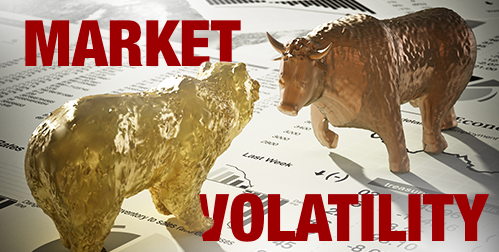Causes of Volatility
The Russian invasion of Ukraine. Soaring inflation. Record rate hikes from the Federal Reserve. Slowed projected growth. All of these are creating a wave of volatility not seen since the start of the pandemic era. Even if the Russia-Ukraine conflict cools down, many expect the market chaos to continue.
The stock market plunged as the conflict between Russia and Ukraine ignited. It recovered only to drop again with each piece of news. Massive same day reversals wreaked havoc on traders. They would buy the dip. Then they would wait for it to rise again. But this doesn’t seem to be working anymore. Volatility is changing the game. It is threatening long term holdings like retirement funds.
Volatility itself is nothing new. Markets go up and down. The amount they move is their volatility. In normal times, traders like a dose of volatility. Betting on its levels has become a market of its own. It is measured by the Cboe Volatility Index, or VIX. It is known as the Wall Street “fear gauge”. This is because it tends to rise when stocks go down. The VIX is based on how much traders are willing to pay for options on the S&P 500 Index. Basically, betting on future stock prices.
The long-term average for the VIX is about 19.5. The VIX reached an all-time high of 85 in March 2020 when COVID-19 caused the stock market to plummet. 1
Now, it is hovering at almost double the average. VIX futures show increased major swings for at least another 8 months. Some 78% of U.S. investment professionals responsible for building funds and portfolios see a rise in stock market volatility in 2022. 2
Preparing for the Future with Volatility in Mind
The worst-case volatility scenario is what investors call the ‘doom loop’. Traders sell in a panic. This forces the market down. Which scares them into selling even faster. Again forcing stocks down more – and so on. Ending up in a total market crash.
Advisors say to diversify your portfolio to protect it from wild market swings. You have to ask yourself a question. Are you really diversified?
In a volatile market, losses are unpredictable. Few could say, for instance, that they saw Meta’s historic drop coming.
Investors may think they’re diversified. But dig in under the hood, and you’ll find more of the same across a portfolio. Many retirement funds that Americans assume are diversified are heavily weighted in tech. A handful of mega-cap tech stocks make up more than 45% of some of the most popular funds in retirement plans. 3
Even ‘low-volatility ETFs’ performed dismally when the pandemic hit. This is because investors turned toward tech stocks and other work-from-home companies. And the outlook for bonds and treasuries is also uncertain.
Gold has shown itself to be a star performer. Gold prices have surged to their highest in a year. Throughout millennia, gold has weathered political and economic storms. Today is no different. Gold remains a steady safe haven and shrew investors are flocking towards it as fast as they can.






